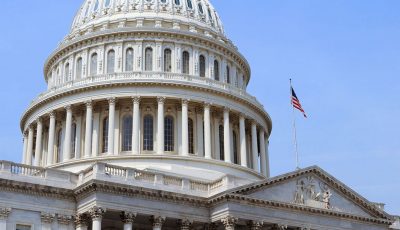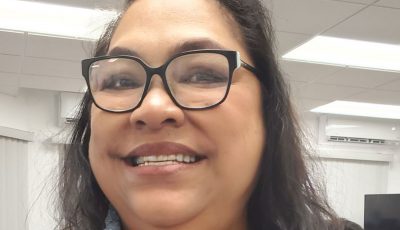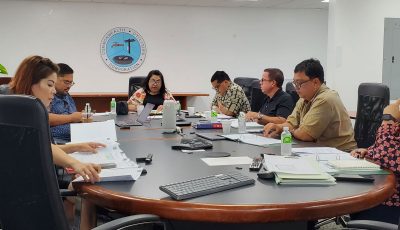Biz community discuss rates, infrastructure issues with CUC
The recent move of the Commonwealth Utilities Corp. board of directors on its upcoming rate case application, which will have an impact on businesses on island, as well as their delaying further action on the Integrated Resource Plan were among the topics discussed during the Saipan Chamber of Commerce monthly meeting held at the Hyatt Regency Saipan last Wednesday.
Without going into much details on the actual rate case, CUC acting executive director Gary Camacho said that the utility company has an opportunity to address some of the issues that they are facing.
In the past two years, Camacho said, CUC has lowered power rates by 60 percent and a 10-percent reduction was implemented since December alone. This downward trend is seen to continue as the reduction is mostly driven by the lowering of fuel prices.
“We believe that this is an opportunity to take advantage of the low rate to address the issues, the financial requirements for operations at this time,” Camacho told the business community.
Just last Saturday, the CUC board and its consultants have discussed finalizing their rate application to be filed to the Commonwealth Public Utilities Commission this month.
The application, Docket 16-01, will ask for the approval of two surcharges: the Disaster Recovery surcharge which will be $0.0145 per kilowatt hour and the Capital Improvement surcharge of $0.0225 per kilowatt hour.
The Disaster Recovery surcharge which is designed to recover CUC’s 10 percent share in typhoon damages, will be implemented across all ratepayers, while the Capital Improvement surcharge, will only be applied to commercial and government accounts—equating to a total of $0.037 per kilowatt hour surcharge for the two latter rate paying class.
‘Board decision’
Chamber secretary Alex Sablan asked Camacho to explain the rate request and why is CUC asking for the 10 percent reimbursement when there is a possibility of the CNMI government being covered 100 percent by the Federal Emergency Management Agency.
“Why did CUC asked for rate recoup of 10 percent? Is it separate from the central government, is that why?” Sablan said, “Please explain why is this borne on the business and government accounts and not spread along all the accounts in the commonwealth, residential being the third account?”
The Chamber president later on also asked Camacho how much is the total cost of the restoration expenses that CUC is trying to recover.
However, Camacho was unable to answer the questions directly. He did acknowledge that there is an “opportunity for the CNMI” to be reimbursed 100 percent by FEMA. Previous meetings by the board said the typhoon surcharge could be removed once this was implemented.
For the total restoration expenses, Camacho said they don’t have the finalized numbers yet but it is around $25 million to $30 million.
As for the decision on who pays the surcharge, Camacho said, “I’d like to answer that because I do have my own opinions on that, however, that is the decision made by the board of directors.”
Camacho added that he “prefers that they answer that question” and apologized that he cannot answer directly.
“There is an opportunity through the CPUC, there is an avenue and a channel for anybody in the community to state their claim and express their opinions on that decision at that particular junction,” Camacho said.
IRP delays
Camacho also updated Chamber members on the state of CUC’s power plants. He said they currently have two power plants and have 57 megawatts of capacity and a 30-megawatt peak load.
He added that repairs at Power Plant 1 will increase CUC’s capacity to 68 megawatts in one year and that they are reviewing options for engine No. 8 at Power Plant 1 that will add another nine megawatts within one to two years.
With the boom in the development on island, Camacho said they anticipate an increase in the load of approximately 21 megawatts.
“CUC can accommodate that particular demand over the next few years,” Camacho said.
When Palacios asked what will happen to CUC after two years, Camacho said they are “currently reviewing options for long term solution.”
With the anticipated additional production that will be required from their facilities accompanied by issues of losses, power plant repairs, and foundations issues, Sablan also asked Camacho about the recent board’s move to delay action on its IRP.
“I understand that this is a board decision as well, but do you believe that the right approach is to delay that process and talk to the oil company that will supply, whoever it is, when we’re talking about alternatives down the road?” Sablan said.
Camacho said that it will be the decision of Mobil to entertain their request to go renegotiate or not.
“Is it something that we believe is the right decision to do, as far as the IRP that you’re referring to…the IRP is critical, is important for all of us, in 20 years. It’s still on the table but there are options. [The board] hasn’t come to that conclusion yet but I think they will, and I believe they are interested in doing so,” Camacho said.
However, board members in prior meetings showed hesitation on moving on with the IRP as it could mean further increasing the rates to fund the projects. Although they did not yet dismiss the IRP entirely, further discussion was tabled as of now.
For the Chamber’s part, Palacios said they will discuss the upcoming rate proposals as a Chamber and might have a position on the matter before the CPUC.



























